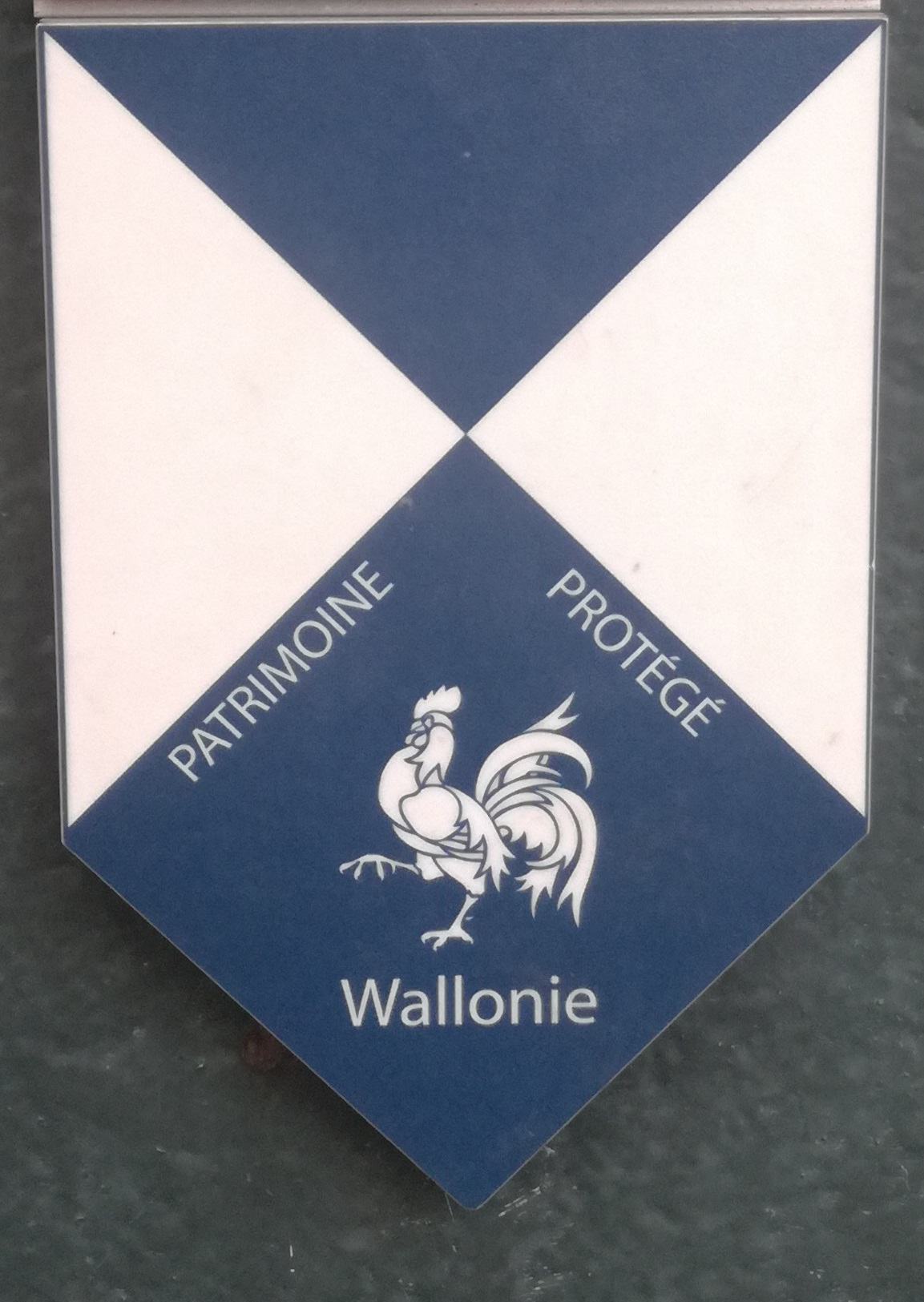[EN]
It is an important witness of Heigne-Jumet's historical past and the entire region. There are few examples of Romanesque art in the Charleroi region.
A text dating from 1201 mentions a 'church in Heigne' and, a little later, Cardinal de Vitry tells us in the Life of Blessed Marie d'Oignies († 1213) that the saint went almost every year on a pilgrimage to St. Mary of Heigne.
The veneration of the Virgin growing, the old sanctuary becomes too small. It is probably the monks of Lobbes who build a church instead of the old sanctuary, which was probably made of wood.
Architecture:

Building made of sandstone and limestone rubble under slate roof. The excavations and the important restoration carried out in 1937-1938 by the architect Simon Brigode free witnesses of the original structure belonging to the end of the twelfth century.
Originally, the ensemble consisted of a nave of six bays, alternating pillars and columns, flanked by aisles and followed by a choir with flat bedside. A tower with two steeple turrets completed the building to the west.
At the beginning of the thirteenth century, the church was enlarged: the aisles were extended to the east, encompassing the primitive choir whose exterior walls were pierced. A new choir probably completed in apse is also built.
At the very end of the sixteenth century, or even at the beginning of the seventeenth century, the aisles were removed, except at the transept, whose arms were now asserted, and the church was reduced by half its length. A choir with three sides was erected in 1618 by Dom Matthieu Behault, prior of Heigne.
The current building is therefore a chapel of reduced dimensions, much less important than the Romanesque sanctuary of the twelfth and thirteenth centuries.
[FR]
Chapelle romane et gothique du XIIe siècle, lieu de pèlerinage important à l'époque dédié à la Vierge de Heigne, parfois appelée la 'Vierge aux cailloux'. Elle est un témoin important du passé historique de Heigne-Jumet et de la région tout entière. Il reste peu d'exemples d'art roman dans la région de Charleroi.
Un texte datant de 1201 mentionne une 'église à Heigne' et, un peu plus tard, le cardinal de Vitry nous raconte dans la Vie de la bienheureuse Marie d'Oignies (†1213) que la sainte se rendait presque chaque année en pèlerinage à sainte Marie de Heigne.
La vénération de la Vierge prenant de l'ampleur, l'ancien sanctuaire devient trop petit. Ce sont probablement les moines de Lobbes qui construisent une église en lieu de l'ancien sanctuaire, qui était vraisemblablement en bois.
Architecture:

D'après les relevés effectués par Simon Brigode.
Édifice en moellons de grès et calcaire sous bâtière d'ardoises. Les fouilles et l'importante restauration menées en 1937-1938 par l'architecte Simon Brigode dégagent les témoins de la structure originale appartenant à la fin du xiie siècle.
À l'origine, l'ensemble était composé d'une nef de six travées, avec alternance de piliers et de colonnes, flanquée de bas-côtés et suivie d'un chœur à chevet plat. Une tour de façade épaulée de deux tourelles d'escalier complétait l'édifice à l'ouest.
Au début du xiiie siècle, l'église est agrandie : les bas-côtés sont prolongés vers l'est, englobant le chœur primitif dont les murs extérieurs sont percés. Un nouveau chœur probablement terminé en abside est également construit.
À l'extrême fin du xvie siècle voire au tout début du xviie siècle, les bas-côtés sont supprimés, sauf au niveau du transept dont les bras sont dès lors affirmés, et l'église est réduite de la moitié de sa longueur. Un chœur à trois pans est élevé en 1618 par Dom Matthieu Behault, prieur de Heigne.
L'édifice actuel se présente donc comme une chapelle de dimensions réduites, nettement moins importante que le sanctuaire roman des xiie et xiiie siècles.
Link/Lien:

Patrimoine protégé :
